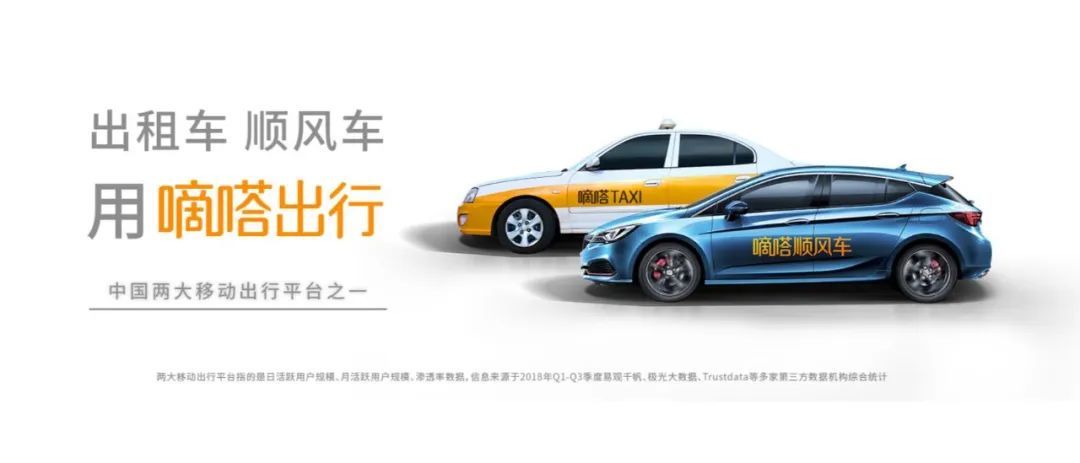The online car-hailing market is waiting for orders to arrive.
Is there still a "rescue" in the online car-hailing market?
"If we don’t earn any more money this month, I’m ready to go back to Luoyang."
Master Li, who has five years of experience in the online car-hailing industry in Henan, decided to try it because the local online car-hailing capacity was gradually saturated. He did not expect that this year of running online car-hailing in Shanghai would be more "difficult".
Since last year, Shanghai, Sanya, Dongguan, Wenzhou, Changsha, Suining and other cities have taken the lead in pressing the "pause button" for online car-hailing. This year, Xiamen, Wuhan, Quanzhou and other places have issued market risk warnings.

But just a few years ago, as a new business model spawned by the platform economy, online ride-hailing drivers could easily earn more than 10,000 yuan per month, but now they are facing the dilemma of difficulty in receiving orders and a sharp drop in income.
There are also online car-hailing platforms at the "waist" that cannot bear it.
Since the beginning of 2024, online car-hailing platforms have seen a phenomenon of "getting together" to sprint to the Hong Kong stock market listing. In March, Di Da and Ruqi launched a sprint to the Hong Kong stock IPO, and in April, they submitted a prospectus to the Hong Kong Stock Exchange. For these players, although their performance is still growing, huge losses and liabilities are also going hand in hand, and they urgently need to borrow capital to rewrite the status quo.
Is there still a "rescue" in the online car-hailing market?
Drivers go from pouring in to wanting to leave
"I have been driving online for six or seven years, and now I receive up to 20 orders a day, and under normal circumstances I open carpooling and special offers. But even so, my income in one day can only reach a little more than half of what it used to be."
Zhang Shifu, a ride-hailing driver in Shanghai, is very anxious. He believes that the current online ride-hailing market in Shanghai is completely saturated. "Fortunately, I bought the car myself, and if it was a rental, I would have more problems now. I know some drivers who have to run at least 8 hours a day to make enough money to rent a car."
According to media statistics, most online ride-hailing drivers currently work 12 hours a day, but the per capita daily order volume is less than 20 orders. Except for first-tier cities, based on the income of 20 yuan per order, the daily flow of drivers is only more than 200 yuan. Excluding various costs, most drivers earn only about 4,000-5,000 yuan per month, and those who can earn 7,000 or 8,000 are already industry leaders.

This year, the freight rates for online car-hailing have dropped again and again.
According to Red Star News, in January 2024, Master Cao, a Shanghai online ride-hailing driver, received a bill for nearly 37 kilometers. After arriving at the destination, the passenger paid 140.13 yuan. However, the actual cost displayed by Master Cao’s driver was only 116.92 yuan. After the platform took a cut, Master Cao actually received only 86.79 yuan.
So many online ride-hailing drivers have to quit the operation and find another way to make a living. But the online ride-hailing market never lacks drivers. If someone quits, naturally someone will replenish them soon.
According to relevant statistics, in 2015, China’s online car-hailing users only 98 million people, in 2019 reached 340 million people, and in 2023, it reached 528 million people, and the scale of online car-hailing users increased by about 439% in eight years.

At the same time, the market size and main body of the online car-hailing industry continue to grow rapidly.
By the end of 2023, a total of 337 online car-hailing platform companies across the country had obtained the operating license of the online car-hailing platform, an increase of 39 over the same period last year. The online car-hailing supervision information exchange system received a total of 9.114 billion orders in 2023, an increase of 30.76% over the same period last year.
The rapidly growing online ride-hailing industry cannot keep up with the growth rate of online ride-hailing drivers.
According to the statistics of the online car-hailing supervision information exchange system, as of the end of April 2024, a total of 6.964 million online car-hailing driver licenses were issued in various places (and as of the end of October 2023, 6.334 million were issued).
The number of drivers has increased, but the money has decreased.
"The main reason for this change is the surge in the number of online car-hailing and online car-hailing platforms, and the increase in vehicles has led to a relative decrease in orders." Master Zhang believes that due to the relatively low industry threshold, a large number of new drivers have been attracted to join, resulting in a thinner spread of orders.

Obviously, the primary reason for the saturation of the online car-hailing industry is the imbalance between supply and demand between the number of online cars and the source of customers.
With the rise of the ride-hailing industry, the number of drivers in the market has increased rapidly. At the same time, the demand for passengers has not grown at the same rate, creating an imbalance between supply and demand. This imbalance has made the ride-hailing market more competitive and drivers face greater operating pressure.
In addition, the current online car-hailing market offers relatively homogeneous services, lacks innovation and differentiated competition, which also exacerbates the intensity of market competition.
What is more worthy of drivers’ vigilance is that when the number of online car-hailing companies is rampant and consumers’ attention is limited, competition has intensified and become the norm in the online car-hailing industry. Among them, individual online car-hailing companies, offline vehicle management, rental companies and car sales companies have induced drivers to buy or lease vehicles by falsely advertising that the online car-hailing market has high profits and guaranteed income.
Once these enterprises experience a break in the capital chain, operating difficulties, and "running away", the driver’s labor compensation will face the risk of not being paid in full and in time.
Automakers, platforms, who can find the next growth story?
Due to limited demand, since the second half of 2023, the dividends of the online car-hailing market have disappeared, accelerating into the era of "excess", and the demand for related models has also narrowed. Sales of new energy vehicle companies focusing on the online car-hailing track led by GAC have begun to enter a bottleneck period.
Last year, GAC’s annual sales exceeded 480,000 vehicles, an increase of nearly 80% year-on-year. In the new energy retail sales rankings of the Passenger Federation, it ranked second only to China and China with a retail sales record of 483,623 vehicles.
In fact, GAC Aian has previously achieved outstanding market performance in the market, which to a certain extent cannot be separated from online car-hailing orders.
According to the National Rental Network About New Car Market Analysis Data released by Cui Dongshu, Secretary General of the Passenger Association, there were 850,000 new rental network about cars last year, of which GAC Aian provided about 220,000 cars, accounting for 45% of its annual sales, accounting for about 25% of the total number of new net about cars last year. In other words, for every 4 new net about cars sold last year, 1 car may be GAC Aian.
Based on the aforementioned situation, GAC Aian has also been dubbed the "King of Online Car-hailing" by the outside world, and some netizens have ridiculed GAC Aian as the new energy automobile brand that understands unemployed middle-aged people best.

However, as the online car-hailing market becomes increasingly saturated, and friends such as automobiles have also begun to develop the online car-hailing market, GAC Aian’s orders in the online car-hailing market have been greatly affected to a certain extent. But how to open up new growth points, GAC Aian currently has no better countermeasures.
In addition to the "injuries" of new energy vehicle companies, more and more platforms are also under pressure from profitability difficulties and compliance challenges to maintain their market share, and IPOs are becoming a life-saving straw for these platforms.
In the past two months, Cao Cao Travel, Ruqi Travel, and TikTok Travel have submitted prospectuses. Among these three platforms, Cao Cao Travel and Ruqi Travel’s businesses are relatively integrated, involving online car-hailing, express and special car services, etc. TikTok Travel is more focused on the segment of ride-hailing.
Among them, it is worth mentioning that it was the first to "cross the line" in Hong Kong stocks.
Recently, Didi Travel successfully passed the listing hearing of the Hong Kong Stock Exchange and is expected to be officially listed in the near future.

In fact, as early as October 2020, Didi Travel submitted its prospectus, but due to various reasons, the listing process was put on hold. Until February 2023, Didi Travel resumed its listing plan, and successfully passed the IPO filing of the Securities Supervision Commission in February this year, obtaining the "key" to listing.
The asset-light business model of TikTok Travel is different from traditional asset-heavy travel companies. TikTok does not own or lease fleet vehicles, avoiding the high cost of car ownership and eliminating the need to provide large subsidies to private car owners and taxi drivers. To tap the potential and increase efficiency, "another mode of travel" can be achieved with minimalincremental costRapidly turn the flywheel of business growth.
According to the prospectus of TikTok Travel, the company’s revenue in the past three years was 781 million yuan, 569 million yuan and 815 million yuan respectively. Although there is a certain degree of volatility, the overall remains stable. At the same time, the gross profit of 631 million yuan, 428 million yuan and 605 million yuan from 2021 to 2023 shows its good profitability.
In its performance, during the reporting period, Hitch platform services contributed 90% of Didi Travel’s revenue. Revenue from providing Hitch platform services was 695 million yuan, 515 million yuan and 774 million yuan, accounting for 89.0%, 90.5% and 95.0% of its total revenue respectively. In addition, the gross profit margin of providing Hitch platform services was 85.4%, 79.5% and 75.9%, respectively, which remained high.
The advantage of gross margin reflects the trend of travelasset light modelThe advantage of.

In second-, third- and fourth-tier cities where online car-hailing has been "saturated", TikTok Travel has even found another world. As of December 31, 2023, TikTok Hitch has opened services in 366 cities across the country, including a large number of second-, third- and fourth-tier cities. In 2023, the response rate of TikTok Hitch is 66.5%. According to the Frost & Sullivan report, the completion rate of rides is generally higher than 70%, which is higher than the industry average.
Therefore, on the one hand, Didi Travel maintained that it did not add additional systemic burden to the city, and at the same time met its own commercial needs. After experiencing a trough in 2022, its net profit returned to positive growth in 2023. Adjusted net profit margins (not measured by International Financial Reporting Standards) were 30.5%, 14.9%, and 27.7%, respectively.
Although tick travel is just an example, it also sends a positive signal to the entire travel industry.
However, the online car-hailing market is still facing the status quo of early warning and market saturation. Online car-hailing companies still need to find new growth points and carry out differentiated competition to enhance market share and profitability. At the same time, in order to cope with the challenges of market competition and industry change, online car-hailing companies also need to continue to carry out technological innovation and service upgrades to improve user experience and satisfaction.